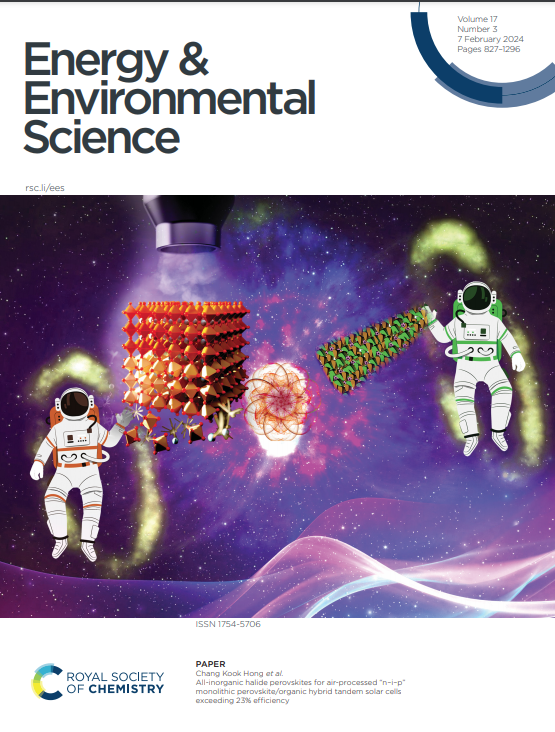Crack pinning enables stable cycling of micro-sized silicon anodes for wide-temperature lithium-ion batteries
IF 30.8
1区 材料科学
Q1 CHEMISTRY, MULTIDISCIPLINARY
引用次数: 0
Abstract
Silicon anodes promise revolutionary lithium-ion battery energy density, yet commercial viability remains constrained by catastrophic volume expansion and interfacial degradation under demanding thermal conditions. Here, we demonstrate engineered crack pinning mechanisms within a gradient-structured hybrid solid-electrolyte interphase (H-SEI) that enables unprecedented cycling stability of micro-sized silicon anodes across extreme temperatures. The dual-layer H-SEI architecture features nanocrystalline inorganic domains providing grain-boundary strengthening, while polymer-integrated outer layers incorporate distributed nanocrystals as crack arresters, preventing fracture propagation through synergistic stress redistribution. This crack pinning strategy maintains structural integrity under ~200% volumetric expansion, preserving continuous wide-temperature lithium-ion transport. Paired with NCM811 cathodes, 1-Ah pouch cells exhibit long cycle life, retaining >80% capacity from −20 °C to 70 °C over extended cycling, substantially exceeding existing silicon technologies. These findings establish crack pinning as a transformative approach for thermally-robust silicon batteries, enabling next-generation energy storage across diverse environmental conditions.裂纹固定使宽温锂离子电池的微尺寸硅阳极稳定循环
硅阳极有望带来革命性的锂离子电池能量密度,但在苛刻的热条件下,其商业可行性仍然受到灾难性的体积膨胀和界面退化的限制。在这里,我们展示了在梯度结构的混合固体-电解质界面(H-SEI)内的工程裂纹钉钉机制,该机制使微尺寸硅阳极在极端温度下具有前所未有的循环稳定性。双层H-SEI结构的特点是纳米晶无机畴提供晶界强化,而聚合物集成的外层包含分布的纳米晶作为裂纹拦阻剂,通过协同应力重分布防止裂缝扩展。这种裂纹钉住策略在~200%的体积膨胀下保持了结构的完整性,保持了连续的宽温锂离子输运。与NCM811阴极配对,1-Ah袋电池具有较长的循环寿命,在- 20°C至70°C的延长循环中保持80%的容量,大大超过现有的硅技术。这些研究结果表明,裂纹钉接是热坚固硅电池的一种变革性方法,可以在不同的环境条件下实现下一代储能。
本文章由计算机程序翻译,如有差异,请以英文原文为准。
求助全文
约1分钟内获得全文
求助全文
来源期刊

Energy & Environmental Science
化学-工程:化工
CiteScore
50.50
自引率
2.20%
发文量
349
审稿时长
2.2 months
期刊介绍:
Energy & Environmental Science, a peer-reviewed scientific journal, publishes original research and review articles covering interdisciplinary topics in the (bio)chemical and (bio)physical sciences, as well as chemical engineering disciplines. Published monthly by the Royal Society of Chemistry (RSC), a not-for-profit publisher, Energy & Environmental Science is recognized as a leading journal. It boasts an impressive impact factor of 8.500 as of 2009, ranking 8th among 140 journals in the category "Chemistry, Multidisciplinary," second among 71 journals in "Energy & Fuels," second among 128 journals in "Engineering, Chemical," and first among 181 scientific journals in "Environmental Sciences."
Energy & Environmental Science publishes various types of articles, including Research Papers (original scientific work), Review Articles, Perspectives, and Minireviews (feature review-type articles of broad interest), Communications (original scientific work of an urgent nature), Opinions (personal, often speculative viewpoints or hypotheses on current topics), and Analysis Articles (in-depth examination of energy-related issues).
 求助内容:
求助内容: 应助结果提醒方式:
应助结果提醒方式:


